The Reality of Post-Heuvelmans Discoveries
Posted by: Loren Coleman on July 20th, 2008
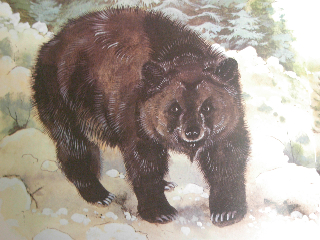
Today and tomorrow I address public and staff attendees at three talks I am giving at the Royal Alberta Museum. I will be discussing the tenets of cryptozoology, and sharing historical information. In recent talks I have delivered at Bates College’s Symposium on Cryptozoology and at the American Museum of Natural History, a frequent question has resurfaced regarding discoveries and the works of Bernard Heuvelmans.
In this new presentation, in a subsection delivered in Alberta, and hencefore, I will be directly responding to one criticism of cryptozoology I feel needs to be seriously answered, once and for all. I will document here, with references, my comment in response to those that wish to debunk cryptozoology.
No doubt, you have heard the skeptical statement, in a variety of ways, issued, to wit, as fact: “Despite all the discoveries of the past half-century, not one of Bernard Huevelmans’ cryptids has turned up.”
This claim is widely repeated and recycled by opponents of cryptozoology, but also by some cryptozoologists (or bloggers and writers identifying themselves as “cryptozoologists”) — however, it is false.
Of course, the Big 3 + 1, the “stars” of cryptozoology (i.e. Yeti/Abominable Snowman, Bigfoot/Sasquatch, and Nessie/Loch Ness Monster, plus the historically fading Sea Serpent) have not been discovered since Bernard Heuvelmans wrote his famed book, On the Track of Unknown Animals. Despite the notion that these umbrella names often may hide several possible species, it is true, the celebrity cryptids have not been discovered.
But, of course, since Heuvelmans book was first written in 1955, in French, many new animals, entirely new species that were former cryptids have been discovered, in the last 53 years. That is not what these critics are talking about, however. The yardstick being used by these antagonists has been, very specifically, Heuvelmans’ book. Ironically, the skeptics are the ones who have given his tome almost biblical status despite the fact Heuvelmans was merely one of the better known milestone cryptozoological chroniclers. Earlier writers and contemporaries of Heuvelmans authored literary collections on cryptids, including Ivan Sanderson, Willy Ley, A. C. Oudemans, Rupert T. Gould, and others. These individuals are often ignored in pushing this post-Heuvelmans’ standard of discovery.
Therefore, let us survey this test case of whether any lesser famous “cryptids” listed by Heuvelmans in 1955 have been found. What we quickly discover is that within the text of Heuvelmans, we do find cryptids that have since been confirmed by specimens and related verifications.
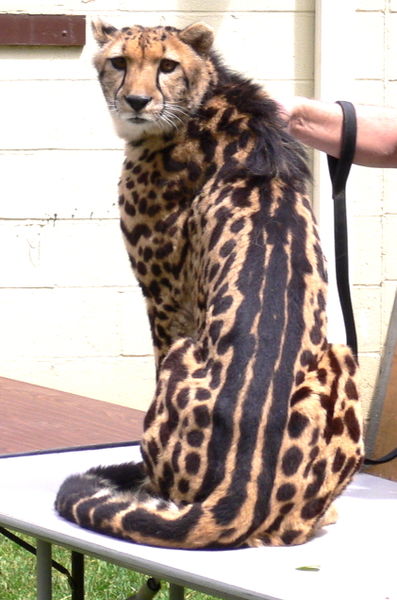
1) The nsui-fisi or king cheetah, a controversial species of East African felid was described as Acinonyx rex in 1927, and has since been confirmed by several skins and even living specimens. It is generally considered a simple genetic mutation of the common cheetah (A. jubatus), but there are good reasons to think that it might be a subspecies in the making or in actuality. Could it one day be said to be a separate species entirely, with clearer genetic testing?
Bottriel, Lena Godsall 1987 King cheetah. Leiden, E.J. Brill.
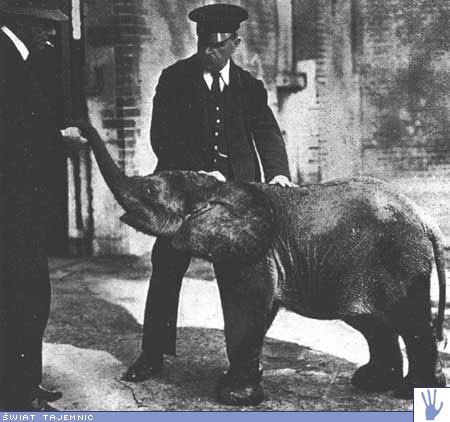
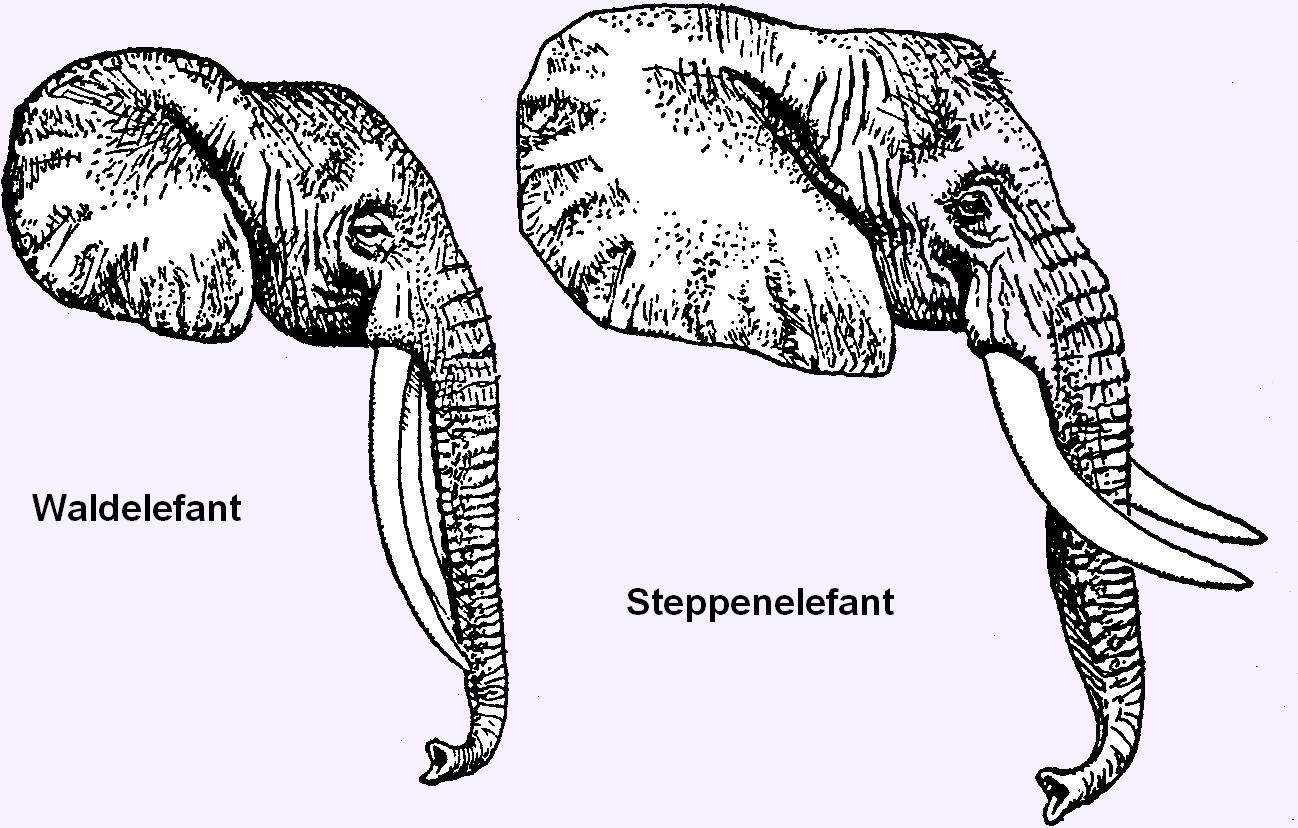

2) The controversial Pygmy Elephant (Loxodonta pumilio) of Africa has been confirmed by film/video footage and photographs of entire herds of the species as requested by its opponents. These individuals now say that it is an unknown behavior or morph of the forest elephant, thus, as expressed firmly in personal communication to me by Michel Raynal, this “demonstrates that no evidence will be accepted by these ultra-skeptics.”
Pygmy Elephants are today reported to be living in both Africa and Asia.
The African Pygmy Elephant, described as Loxodonta pumilio, is currently considered to be a tiny morph of the African Forest Elephants (L. cyclotis); see Debruyne et al. (2003). But even the DNA studies are less than clear, and the groupings and photographs of the small elephants appear to confirm that the species is valid.
The Borneo Elephant (Elephas maximus borneensis) is also called a “Pygmy Elephant.” This elephant, inhabiting tropical rainforest in north Borneo (east Sabah and extreme north Kalimantan), was long thought to be identical to the Asian Elephant and descended from a captive population. In 2003, DNA comparison revealed them to be a new subspecies. In Augut 2007, it was reported that there are probably not more than 1,000 pygmy elephants left in Sabah, after a two year study by WWF.

Further discussions are now mentioning the cryptid status of the Pygmy Elephants of India. Kani tribals dwelling in the rain forests of the Western Ghats, Kerala, India, claim that there are two distinct varieties of elephants in the Peppara forest range (part of Western Ghat), one the common Indian elephants and the other a dwarf variety which they call “Kallana.” The existence of a pygmy variety of elephant in India has not been scientifically ascertained.
Eisentraut, Martin, und Wolfgang Böhme 1989 “Gibt es zwei Elefantenarten in Afrika?” Zeitschrift des Kölner Zoo, 32 [n° 2] : 61-68.
Debruyne, R., Holt, A. van, Barriel, V. & Tassy, P. 2003. “Status of the so-called African pygmy elephant (Loxodonta pumilio (NOACK 1906)): phylogeny of cytochrome b and mitochondrial control region sequences.” Comptes Rendus de Biologie 326(7):687-697.
Böhme, Wolfgang, und Martin Eisentraut 1990 “Zur weiteren Dokumentation des Zwergelefanten (Loxodonta pumilio NOACK, 1906).” Zeitschrift des Kölner Zoo, 33 [n° 4] : 153-158.


3) The late survival of a controversial bear in Northern Africa, the so-called Atlas Bear (Ursus crowtheri) – pictured at the top of this posting – up to historical times (see ancient drawings directly above), has now been confirmed by radiocarbon dates at 420 to 600 AD.
Hamdine, Watik, Michel Thevenot, et Jacques Michaux 1998 “Histoire récente de l’ours brun au Maghreb.” Comptes-Rendus de l’Académie des Sciences, sciences de la vie, 321 : 565-570.
Tretretretre
4) The last survival of a Giant Lemur (the native termed tretretretre) in Madagascar, up to historical times, has been confirmed by radiocarbon datings of Palaeopropithecus ingens bones at only 510 years BP (approx. 1500 AD).
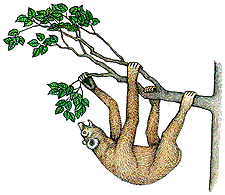
Palaeopropithecus
Simons, Elwyn L. 1997 “Lemurs: Old and New.” In Steven M. Goodman and Bruce D. Patterson: “Natural change and human impact in Madagascar,” Washington, Smithsonian Institution Press: 142-166.
The record shows that there are, at least, four cryptids from Heuvelmans’s 1955 book, which have proven to be valid!
Much appreciation to French cryptozoologist Michel Raynal for contributing extensively to this article. Thanks to Matt Bille for his assistance with bear images. Thanks to Patrick Huyghe for pygmy elephant material.
^^^^^^^^^^^^^^^^^^^^^^^^^^^^^^^^^^^^^^^^^^^^^^^^^^^^
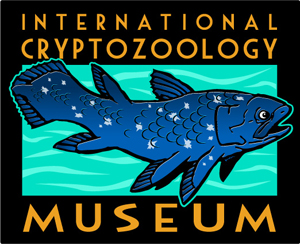
More open space for the museum! Keep alive the museum, despite the IRS troubles. Please remember to donate to the museum to meet the August goal, and today you may directly send a check, money order, or, if outside the USA, an international postal money order made out “International Cryptozoology Museum” to
International Cryptozoology Museum
c/o Loren Coleman
PO Box 360
Portland, ME 04112
Please “Save The Museum”! Easy-to-use donation buttons are now available here or merely by clicking the blank button below, which takes you to a donation site without you having to be a member of PayPal. Thank you, everyone!
Where are all the cryptozoology donor angels? What will your post-Heuvelmans’ legacy be? Want a special display dedicated to your favorite cryptid, in your honor for a $2000 donation? $10,000?
About Loren Coleman
Loren Coleman is one of the world’s leading cryptozoologists, some say “the” leading living cryptozoologist. Certainly, he is acknowledged as the current living American researcher and writer who has most popularized cryptozoology in the late 20th and early 21st centuries.
Starting his fieldwork and investigations in 1960, after traveling and trekking extensively in pursuit of cryptozoological mysteries, Coleman began writing to share his experiences in 1969. An honorary member of Ivan T. Sanderson’s Society for the Investigation of the Unexplained in the 1970s, Coleman has been bestowed with similar honorary memberships of the North Idaho College Cryptozoology Club in 1983, and in subsequent years, that of the British Columbia Scientific Cryptozoology Club, CryptoSafari International, and other international organizations. He was also a Life Member and Benefactor of the International Society of Cryptozoology (now-defunct).
Loren Coleman’s daily blog, as a member of the Cryptomundo Team, served as an ongoing avenue of communication for the ever-growing body of cryptozoo news from 2005 through 2013. He returned as an infrequent contributor beginning Halloween week of 2015.
Coleman is the founder in 2003, and current director of the International Cryptozoology Museum in Portland, Maine.










great work Loren, good luck on your talks.
Cool article, by the way.
Not trying to be a wet blanket but you will need more than four little knowns to shut them up properly. Put the nasayers to task of proving beyond a shadow of a doubt they’re right, it will be harder than they expect. Remember back in the 80’s on the That’s Incredible TV show that they had footage of a king cheetah in the wild, that was cool.
In the case of the King Cheetah we can be actually sure that is no species, as well no subspecies. They occur in the same regions as normal cheetahs, they breed with them and sometimes normal cheetahs with recessive genes can have king cheetahs as offspring. This would be not the case, if it would be an own subspecies or species, because it is only a single-pattern-mutation. It cannot be excluded, that this could be the stock for a new subspecies, but untill now it is just a variety.
The Atlas bear was also long known to have survived for a long time. Around 1900 (or a bit later) bones of this animals were discovered in a cave associated with late roman artefacts, in it was even described by several people in the late 19th century as a living animal. The Jardin de Plantes in Paris even housed a specimen which was a present from the emperor of Morocco.
Re: “The Reality of Post-Heuvelmans Discoveries”
I haven’t read this famous tome (there – I admit it it – do with me what you will!!). Did he say that in his opinion the pygmy elephants were a different sub-species, or merely contend that they existed?
Most people, it appears, have not read the original passages in Heuvelmans about these animals.
Let me respond quickly to several, not just one person, as I have to go on to the museum talks here in Alberta.
1. As I noted above, this was directed at a 1955 yardstick (Heuvelmans’ book) that has unfairly been used by opponents of cryptozoology. It is difficult to deny that large mammals and other animals have been discovered since 1955.
2. The book is about land cryptids, so the comments about marine and freshwater discoveries are irrelevant. It is outside the realm of this discussion to relate that book to the marine cryptids sightings, and a few misidentifications and theories. See Heuvelmans’ In the Wake of Sea Serpents and other essays about those cryptids.
3. The specific point is the claim that the Heuvelmans cryptids in the 1955 book, totally, in whatever form, did not exist and have not been found. It is not about whether they were definite species or subspecies. It has been a total black and white view that cryptozoology is unproven and a pseudoscience using the absolute undermining of this one book. Absolute stances are always dangerously unreliable in zoology.
4. For example, in the case of the King Cheetah, Bernard Heuvelmans correctly predicted the outcome would only be of abnormally marked local individual cats. He said: “The abnormalities could be connected with the genetic ancerstry of a group of animals in a confined area.” (I mention this in my 1999 book, Cryptozooology A to Z, so the skeptics did not have to have a copy of the 1950s Heuvelmans’ book to understand this.)
5. Another example is that conservative zoologists still dispute the pygmy elephants, and thus you will have debates continue. But the point being made is that evidence supplied and accepted in some zoological quarters vindicates Heuvelmans’ words, in spite of the continuing disputes within zoological circles.
6. The very existence of the Atlas bear has been in dispute. Heuvelmans supported its existence based on the evidence mentioned above, and his passages have been confirmed. Ditto with the large cryptid lemur and the later, post-1955 carbon-dated proto-historical finds.
If folks get a chance, please read Bernard Heuvelmans’ work, which is usually held at the better libraries.
I have never heard before that the existence of the Atlas bear was ever in doubt. I made a lot of research about this animal for a chapter in my book about holocene megafauna-extinctions, and there was never any hint that there was criticisms about its existence. In The doomsday book of animals from where the picture on the top is, you can find a lot of information about this animal, including the note about the captive specimen from Paris. If I remember correctly Karl Shuker mentioned reports of sightings about bears in the Atlas mountains during the late 20th century, but I don’t know how the actual details were. I just found it strange to write this like something completely new, as the Atlas bear is known since a long time to have survived until very recently.
In the case of the king cheetah I just wanted to say that there is no chance that it is an own subspecies (because some people think this is the case).
I may sometimes sound very critical, but I think this is very important in cryptozoology. There is a big problem with people in cryptozoology which are much too open-minded. Last week I found a book by a comparably well-known author who interpreted for example an ice-age cave-drawing from Southern France which shows a great auk, as a Plesiosaur, and there are much badder cases in the internet.
I do not and didn’t say that there were no spectacular discoveries of big mammals during the last decades, and I suppose more will come, as well as many discoveries of smaller but still impressive birds and reptiles.
Just to take the pygmy elephant. This is one of the very most probable cryptids which could find its way to a zoo (or better again), and it shows that there are still good possibilities for sensational discoveries. We have photos, videos and much more evidence, and the idea of some zoologist that they are too small because they don’t find enough food doesn’t work as they live in the same regions as normal elephants. I am no opponent of cryptozoology, and it would be really unfair to say I am not open-minded. There are a lot of possible cryptids, but to stay realistic, I think really most of the big popular “monsters” did never exist. We will surely never find a 80m long snake at the amazonian rain forest or 200 tons-squids, as well as Bat-people or plesiosaurs in scottish lakes. Many people just look for monsters without regarding that there are a lot of small but still very interesting cryptids, where the possibility to find out that they are or at least were real is much higher than in any alleged Dinosaur or hominid.
I own On the tracks of Unknown Animals, as well as Cryptozoology from A-Z, and also some very good books from Hans Schomburgk with first-hand-accounts of some african cryptids, so I know about what I am speaking.
The last chapter in On the tracks of Unknown Animals is especially interesting, as it deals with Madagascar. There is really a lot of potential for cryptids in this country, even if it turns out that many of them are really already extinct. This special topic will also have a main part in a book I want to publish this year. I made a lot of research about this animals, and it was often very hard, because you can find only very little information about this fantastic animals. After this study I came also to the conclusion that the tretretretre was very probably not one of the three Megaladapis species, and also not one of the Palaeopropithecus species, because it differs in many traits from them. The animal which would actually come closest in size, behavior and anatomy would be the giant Archaeoindris, the largest lemur of all times. Strangely it was not even mentioned by Heuvelmans, as well as many others who wrote about the tretretretre. Criticizing does not always have to be contraproductive, it can also help to come to new ideas. Just take the case of the armoured archaeoceti. As Darren Naish wrote, the idea of bony-plated Basilosaurs came from falsely identified turtle-shell-bones. There are also many similar cases, like (to take Darren again as example) the idea that Raven from the native american legends was a Titanis. Things change, and not everything which looked like a good idea some years ago still works with the actual knowledge.
That tretretretre looks really intriguing.
Loren, since it I made the “No progress on the fronts defined by Heuvelmans” argument in a comment on Darren Naish’s Tetrapodzoology blog, I feel I can count this post as, in part, a reply to me: thank you!
Comments: (1) I’ll have to re-read OTTOUA again, more carefully before i talk again!
(2) I’m not sure that verification of “survival into historic times” counts, since it was already known that species possibly described in native accounts were fairly recently extinct
(3) There’s a methodological motive for restricting the argument to Heuvelmans (or to some other published cryptozoological survey or surveys). The argument wasn’t meant to ve for scepticism about the existence of (large, “charismatic”) unknown animals: there have been a series of exciting discoveries in recent years (land mammals from Viet-Nam, Omura’s whale, Van Roosmalen’s South American stuff)! What I found sobering was that most of these were NEW: they had not been among the cryptids discussed by cryptozoologists. The induction (cheering for zoology as a whole, depresing for cryptozoology as a project) is that we can anticipate exciting discoveries in the future… BUT that they probably won’t be among cryptids currently generating discussion.
Anyway, thanks for your reply. And I should have reread OTTOUA carefully enough to note the King Cheetah before mouthing off on Darren’s blog!
Thanks for the heads-up on Heuvelman’s discoveries…
Nice thread.
His work lives on.
Another huge point of Heuvelmans’s books, land based and marine based, is the simple fact that there are unknown creatures that exist alongside humanity in the world that have yet to be discovered. That is proven every year over and over again, as we go deeper into the rainforests, other countries and into areas that do not often (or ever) see human traffic.
As Loren said up there, skeptical nay-sayers like to look at the big 4 and lump everything under that, and since there is no definitive proof (I’ll let that lie for the time being, even though I don’t agree with that supposed precept) for them, currently, they try to disregard Heuvelmans entirely.
Heuvelmans was a rogue questioning the validity of scientific thinking of the time, and now–the point of this entire website and its supporters. There are critters and creatures out there as yet undiscovered by mankind, and some of them bigger than a bird or a cat or even a person.
To bash at his hit/miss record only sounds like sour grapes from those who don’t want to explore such possibilities.
I’m not saying you have to believe…that’s your choice. But if you can keep an open mind, you can at least look at possibility. And that’s what Heuvelmans was, and is all about.
Thanks for clearing that up, Loren.
If I understand it (totally unlikely given the hot weather and ale consumed), then the question of the pigmy elephants in the book is not what they are but WHETHER they are. If Heuvelman’s book says that they exist, then he was right and the sceptics were wrong. They do exist, and to dispute their genetic makeup is to move the goalposts.
I showed a photo of a pigmy elephant mother and young to my little girl. She said they were baby elephants. When I told her one was the mother she said ‘then they must be some special type of tiny elephant.’
Ouit of the mouths of babes…
I liked this line:
“Ironically, the skeptics are the ones who have given his tome almost biblical status despite the fact Heuvelmans was merely one of the better known milestone cryptozoological chroniclers.”
I too find it interesting that in their efforts to discredit crypto, debunkers don’t seem to think it possible that anyone in the field could ever be wrong! I’ve run into that attitude a lot here: Krantz said that; it was shown wrong; therefore the sasquatch does not exist.
Just like mainstream zoologists, those of the cryptid kind make mistakes. No scientist thought the coelacanth could possibly be real. So, does that mean they’re wrong about the sasquatch?
Sauce for the goose, as they say.